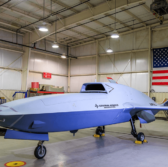Northrop Grumman has received a $28.9 million contract to help the Defense Advanced Research Projects Agency develop tactical autonomy capabilities for multi-ship, beyond visual range defensive and offensive air combat missions.
A notice posted on SAM.gov states that Northrop will build an AI air combat capability that could work with existing sensors, electronic warfare and weapons within dynamic and operationally representative environments.
DARPA’s AI Reinforcements also aims to develop advanced modeling and simulation approaches and processes to design, test and deploy future versions of AI software platforms.
A separate announcement from the Department of Defense said that work will occur in Baltimore, Maryland; San Jose, California; and Fairfax, Virginia, through August 2025.
DARPA will obligate funds in fiscal 2023 and 2024 research, development, test and engineering allocations.

Join the Potomac Officers Club’s 5th Annual Artificial Intelligence Summit on March 21 to hear more about cutting edge AI innovations from government and industry experts. Register here.





